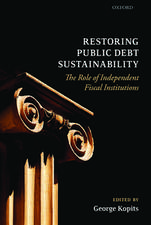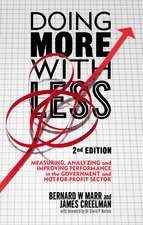Microsimulation and Public Policy – Selected Papers from the IARIW Special Conference on Microsimulation and Public Policy, Held in Canberr: Contributions to Economic Analysis
Autor A. F. Hardingen Limba Engleză Hardback – 21 apr 1996
Din seria Contributions to Economic Analysis
- 23%
 Preț: 1071.35 lei
Preț: 1071.35 lei - 23%
 Preț: 1023.59 lei
Preț: 1023.59 lei - 23%
 Preț: 932.12 lei
Preț: 932.12 lei - 23%
 Preț: 1258.06 lei
Preț: 1258.06 lei - 23%
 Preț: 1125.47 lei
Preț: 1125.47 lei - 23%
 Preț: 1072.71 lei
Preț: 1072.71 lei - 23%
 Preț: 1134.25 lei
Preț: 1134.25 lei - 23%
 Preț: 1025.01 lei
Preț: 1025.01 lei - 23%
 Preț: 928.43 lei
Preț: 928.43 lei - 23%
 Preț: 1327.58 lei
Preț: 1327.58 lei - 23%
 Preț: 1090.22 lei
Preț: 1090.22 lei - 23%
 Preț: 1196.60 lei
Preț: 1196.60 lei - 23%
 Preț: 928.84 lei
Preț: 928.84 lei - 23%
 Preț: 1061.82 lei
Preț: 1061.82 lei - 23%
 Preț: 1113.58 lei
Preț: 1113.58 lei - 23%
 Preț: 874.46 lei
Preț: 874.46 lei - 19%
 Preț: 673.76 lei
Preț: 673.76 lei -
 Preț: 333.43 lei
Preț: 333.43 lei - 23%
 Preț: 1264.34 lei
Preț: 1264.34 lei - 23%
 Preț: 1323.45 lei
Preț: 1323.45 lei - 23%
 Preț: 1261.24 lei
Preț: 1261.24 lei - 23%
 Preț: 1099.44 lei
Preț: 1099.44 lei - 23%
 Preț: 1149.25 lei
Preț: 1149.25 lei - 23%
 Preț: 836.47 lei
Preț: 836.47 lei - 23%
 Preț: 854.99 lei
Preț: 854.99 lei - 23%
 Preț: 1125.37 lei
Preț: 1125.37 lei - 23%
 Preț: 932.57 lei
Preț: 932.57 lei - 23%
 Preț: 1266.20 lei
Preț: 1266.20 lei - 23%
 Preț: 1018.90 lei
Preț: 1018.90 lei - 23%
 Preț: 1204.17 lei
Preț: 1204.17 lei - 23%
 Preț: 1398.42 lei
Preț: 1398.42 lei - 23%
 Preț: 1299.72 lei
Preț: 1299.72 lei - 23%
 Preț: 1221.55 lei
Preț: 1221.55 lei - 23%
 Preț: 1134.89 lei
Preț: 1134.89 lei - 23%
 Preț: 928.43 lei
Preț: 928.43 lei - 23%
 Preț: 930.35 lei
Preț: 930.35 lei - 23%
 Preț: 1028.12 lei
Preț: 1028.12 lei - 23%
 Preț: 895.88 lei
Preț: 895.88 lei - 23%
 Preț: 1096.14 lei
Preț: 1096.14 lei - 23%
 Preț: 999.71 lei
Preț: 999.71 lei - 23%
 Preț: 1052.38 lei
Preț: 1052.38 lei - 23%
 Preț: 1045.56 lei
Preț: 1045.56 lei - 23%
 Preț: 1255.61 lei
Preț: 1255.61 lei - 23%
 Preț: 1076.51 lei
Preț: 1076.51 lei - 23%
 Preț: 1042.59 lei
Preț: 1042.59 lei
Preț: 802.39 lei
Preț vechi: 881.75 lei
-9% Nou
Puncte Express: 1204
Preț estimativ în valută:
153.53€ • 160.73$ • 127.04£
153.53€ • 160.73$ • 127.04£
Carte disponibilă
Livrare economică 15-29 martie
Livrare express 01-07 martie pentru 47.61 lei
Preluare comenzi: 021 569.72.76
Specificații
ISBN-13: 9780444818942
ISBN-10: 0444818944
Pagini: 548
Dimensiuni: 155 x 234 x 787 mm
Greutate: 0.94 kg
Editura: Emerald Publishing
Seria Contributions to Economic Analysis
ISBN-10: 0444818944
Pagini: 548
Dimensiuni: 155 x 234 x 787 mm
Greutate: 0.94 kg
Editura: Emerald Publishing
Seria Contributions to Economic Analysis
Cuprins
Introduction and overview (A. Harding). Part 1: Static Models and Applications. Microsimulation of direct taxes and fiscal policy in the United Kingdom (R. Eason). Microsimulation modelling experience at the Canadian department of finance (A. Gupta, V. Kapur). Microsimulation in comparative social policy analysis: A case study of unemployment schemes for Belgium and The Netherlands (L. De Lathouwer). Including consumption expenditure and welfare services in a microsimulation model (A. Salomaki). The use of microsimulation to update poverty statistics based on household budget surveys: a pilot study for the United Kingdom (K. de Vos, M.A. Zaidi). Part 2: Incorporating Behavioural Response. A microsimulation approach to the demand for day care for children in Denmark (H. Baekgaard). Modelling consumer behavioural response to commodity tax reforms (E. Symons, N. Warren). Market and non-market labour supply and the impact of the recent German tax reform - incorporating behavioural response (J. Merz). Direct and behavioural effects of income tax changes - simulations with the Swedish model microhus (A. Klevmarken, P. Olovsson). Part 3: Lifetime and Retirement Incomes. Poverty alleviation vs social insurance systems: A comparison of lifetime distribution (J. Falkingham, A. Harding). Social security and lifetime income redistribution: A microsimulation approach (J.H.M. Nelissen). Microsimulation of pension reform proposals: Modelling the earnings of couples (H.P. Galler). Pension analysis in a static model with lifetime income distribution: Initial results (B. Eklind et al.). The future burden of public pension benefits: A microsimulation study (L. Andreassen et al.). Part 4: Micro/Macro Links and Firm Behaviour. Forecasting changes in the distribution of income: An applied general equilibrium approach (G.A. Meagher). XECON: An experimental/evolutionary model of economic growth (M. Wolfson). Endogenous economic growth through selection (G. Eliasson). Firm sponsored training, technical progress and aggregate performance in a micro-macro model (G. Ballot, E. Taymaz). Part 5: Models and Data. Centralised data management: Can it help micro-modellers? (K. Blackburn, W. Richter). Statistical reliability in microsimulation models with econometrically-estimated behavioural responses (S. Pudney, H. Sutherland). Health, wealth, pensions and life paths: The corsim dynamic microsimulation model (S. Caldwell). Index. Notes on contributors.















